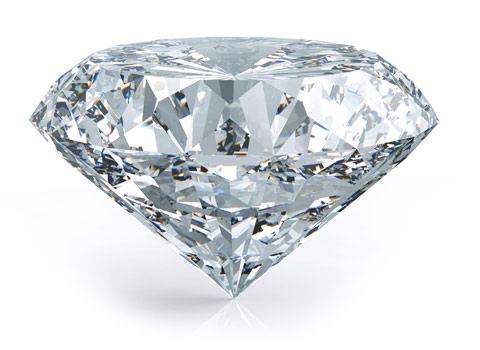
Lab-Grown vs. Organic Diamonds
- “You’re WAY too young to be married.”
- “You’re HOW old?”
- “Do your parents know you’re married?”
Here are three things the people under the age of 25 often hear when a diamond ring is spotted on their left hand. There is no question that there has been a spike in weddings within the younger generations. More people are saying “I do” to each other and “I don’t” to big budgets. Two-thirds of all millennials today have an engagement ring budget of $2,500 or less, around half of the national average cost. Four in every ten plan to pay for their wedding on their own. One supposed way to avoid the more costly and save a few extra bucks is to purchase an engagement ring with a “stimulant” or an “imitation” center stone, such as a moissanite or cubic zirconia. It is also believed that the new fad of “Lab-Grown Diamonds” can cut the bill down significantly, but there are a few more things to consider than just the outer aesthetic before you plan on proposing.
First, how are they made?
Ground-grown, organic diamonds form in the “diamond stability zone”, 80 to 120 miles before the Earth’s surface, where the temperatures are extreme and the conditions are just right. They are formed there when pure carbon encounters both extreme temperature and pressure over an extended period of time. Volcano eruptions shake the diamonds to the top of the Earth’s surface where they are embedded in rock and further mined.
Lab-created diamonds are grown in highly-controlled laboratory conditions that emulate the growing process of an organic diamond. The handmade, man-made stones consist of nearly the same chemical composition and optical appearance as traditional diamonds (i.e., hardness, conductivity). This poses an issue as it classifies them as real diamonds rather than “synthetics”. Because they are created in controlled environments, the growing process takes much less time – about three months total.
Second, how are they graded?
It’s important to note that almost all diamonds, both organic and lab-grown, have inclusions. Their color and clarity, among other characteristics, vary with every stone. GIA, or the Gemological Institute of America, does not grade lab-grown diamonds on the same scale as natural diamonds. Lab-grown diamonds are issued a Synthetic Diamond Grading Report that offers a more general description rather than detailed, like that of a natural diamond grading report. Lab-grown diamonds are also laser-engraved with the words “LABORATORY GROWN” along the girdle.
Third, how do they differ in value?
It is important to note that lab-grown diamonds are man-made and limitless in quantity. Because of that, they will never be worth more than the value the day they are bought, with a decreasing value as they age. The lower price of manufacturing makes them ideal, but they have no resale value. Organic diamonds are finite in their quantity, typically retaining their value and allowing them to be sold later on if desired. Organic diamonds are rare in the fact that of every five mined, one is considered jewelry quality.
It’s important to do what is best for you. If your heart screams organic diamonds, look into them. If your wallet screams lab-created or moissanite stones, look into them.
Regardless of the decision made, engagement rings symbolize more than just your budget and how much you know about diamonds, but the lasting commitment you make to the person you see yourself spending forever with. Whichever route you take, we are happy to assist you and would love to be a part of your everlasting love story.
